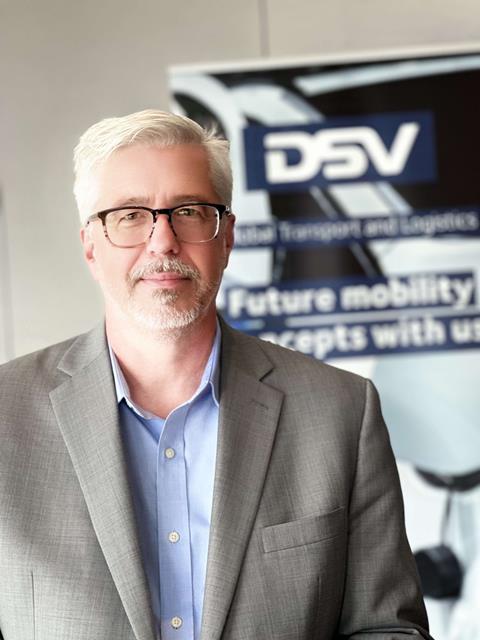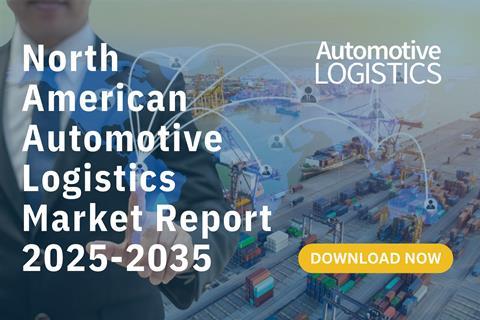Following DSV’s €14.3 billion acquisition of DB Schenker, Greg Slawson, executive vice-president and global head of automotive at DSV, expects strategic benefits to come, including diversification of services and leveraging digital tools to meet the shifting demands of the automotive industry. As DSV scales up, it aims to strengthen supply chain resilience, improve service offerings and deliver sustainable, technology-driven solutions for the evolving challenges in automotive logistics.
Following the announcement in September that DSV had reached an agreement to acquire DB Schenker for €14.3 billion ($15.9 billion), the largest purchase in DSV’s history, Automotive Logistics spoke with Greg Slawson, executive vice-president and global head of automotive at DSV Global Transport and Logistics.
The merger of DB Schenker, pending approvals from competition authorities, will create a logistics network with an expected pro forma revenue of around €39.3 billion ($43.6 billion) – based on 2023 figures – and a combined workforce of approximately 160,000 employees across more than 90 countries. The move is an example of much-needed consolidation in a fragmented automotive logistics sector.
Last year, DSV reported that 15% of its $21.6 billion global revenue came from automotive logistics.

Scaling up services
While details on the integration will not be available until after the deal is officially closed, expected in the second quarter of 2025, Slawson outlined DSV’s broad vision for the automotive vertical. He emphasised that while DSV and Schenker currently remain two separate companies competing on market terms, the acquisition is expected to bring “several strategic benefits”, including diversifying services, expanding into new service areas and ultimately strengthening its position in the automotive logistics sector.
“These benefits will help DSV provide more comprehensive solutions to our customers,” said Slawson. He also emphasised DSV’s focus on maintaining flexibility for customers during this period of growth. “Mergers and acquisitions (M&A) have always been part of DSV’s strategy, and we’ve continuously shown our ability to balance complex integrations with day-to-day operations, keeping services adaptable to our customers’ changing needs.”
DSV has a strong legacy in M&A for the growth of its business. Among its major acquisitions it took over UTi Worldwide in 2016 and Panalpina in 2019. In 2021 it bought Agility’s Global Integrated Logistics, with significant gains for its Road, Solutions and Sea & Air divisions, and making it one of the top three logistics providers globally.
The ability to scale up through acquisitions like Schenker, Slawson pointed out that achieving scale will allow the company to leverage resources more effectively and provide a better product to its automotive customers. He stressed that scale is not just about size, but also about “delivering a wide range of services and improving overall service quality.”
Slawson joined DSV when the company took over UTi.
Digital tools for growth
The logistics provider’s vision for growth in providing services to the automotive sector includes increasing market share through a stronger commercial platform, expanding its service portfolio and enhancing operational efficiency to better serve automotive customers, according to Slawson. That includes through the enhanced use of automation, digitalisation and data analytics.
“The company is preparing to support the evolving needs of customers by investing in new technologies and enhancing its service offerings,” said Slawson. “This includes improving supply chain visibility, optimising transportation routes and implementing advanced data analytics to provide better insights and decision-making capabilities. Furthermore, we are ready to assist carmakers in securing robust and flexible supply chains in an ever-changing world.”
The evolving needs of the automotive industry include the historical transformation to electric powertrains, which brings with it a different level of supply chain complexity, in which there is an enhanced focus on more sustainable sourcing and logistics.
“We see these trends as opportunities for growth and are investing in new technologies and processes,” said Slawson. “This includes developing sustainable transportation solutions, optimising supply chain operations, and enhancing our service offerings to meet the evolving needs of our customers.”
Staying ahead in the rapidly evolving automotive logistics landscape is more critical than ever. Download our North American Automotive Logistics Market Report 2025-2035 now to access vital information on market forecasts, competitive positioning and industry recommendations – empowering your business to navigate challenges and seize growth opportunities.

Unlock the future of Automotive Logistics: Download the 2025-2035 North American Market Report






































No comments yet